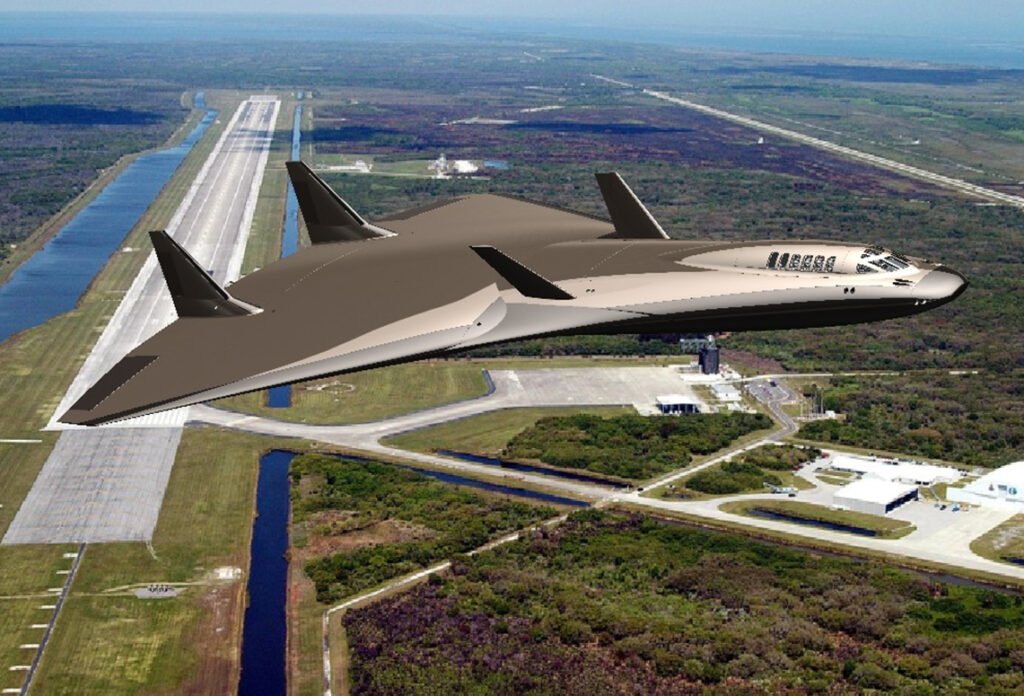Consider the fact that we are speak of moving to other stars akin to the way we speak about traveling to the Moon. I know this sounds like something from Star Trek and indeed, Exodus Propulsion Technologies is already striving to make this a reality. This company can be considered as the pioneer in development of new possibilities of space travel and its goal is to make interstellar travel possible. Now this is how it has been done.
The Genesis of Exodus Propulsion Technologies
I will try to focus on the priorities of the company and its origins, more precisely, its founders; indeed, Exodus Propulsion Technologies (EPT) was created by a group of talented engineers and scientists who set the mission of the company on the colonization of other star systems. By virtue of the experience of the team with more than thirty years in aerospace engineering the team worked to design propulsion systems that would address the constraints of interstellar travel.
The Vision Behind EPT
EPT’s founders dreamt of humanity reaching the stars, settling on planets, and see to it that the species endures. Curiosity does not have to only be about the next thrilling discovery to be made it is also about the long-term survival of the human race to discover new resources and to understand the universe around us.
Foundational Technologies
The foundation of EPT is thus to build technologies for space propulsion that could bring down the present order of tens of thousands years to the neighbouring stars in a few decades or even years. The company specialises on several major technologies such as Nuclear propulsion, Anti matter engines and Advanced ion drive.
Nuclear Propulsion Systems
Nuclear propulsion is one of the most popular technologies most likely to be used in interstellar travel. This is in contrast with chemical rockets in which propulsion is achieved through burning of fuel as in chemical rockets.
How Nuclear Propulsion Works
What in fact the propulsion of nuclear boats entails is the utilization of heat produced from a nuclear reaction to eject the propellant at high speeds. This method can go much farther and much faster than the chemical rockets therefore making this method much efficient.
Types of Nuclear Propulsion
- Atomic Warm Rockets (NTRs): These utilize an atomic reactor as an intensity source to warm a fuel like fluid hydrogen and ousts it through a spout to produce push.
- Atomic Electric Impetus (NEP): In this framework, an atomic reactor produces power which thusly drives an electric drive framework, for example, particle push.
Advantages of Nuclear Propulsion
Launching with nuclear propulsion has its advantages over conventional chemical rockets for the following reasons. They can travel at much greater speeds, meaning that the journey to a various planets and even other stellar system can be made in a matter of decades instead of thousands of years. Furthermore, where reactor or nuclear propulsion systems are used, the use of propellant for a particular mission is relatively low.
Antimatter Engines
Another technology that is under development at EPT is the usage of antimatter as a propellant. Antimatter engines may be one of the most powerful forms of propulsion ever envisaged, and are capable of generating a huge amount of energy.
What is Antimatter?
Depending on the model of antimatter, it simply is the exact opposite of regular matter. As for matter and antimatter, these two particles are sure to be destructive as they readily destroy the other one, and in the process give out a lot of energy. This energy can thereby be used to power a spacecraft.
Challenges and Solutions
One of the greatest difficulties with antimatter drive is the trouble of creating and putting away antimatter. EPT is chipping away at creating protected and effective strategies for producing and containing antimatter for use in rocket.
The Potential of Antimatter Engines
Antimatter engines have the potential of cutting the journey to other stars to take a few years at the most; interstellar travel becomes a possibility if this invention is successful. It could bring a whole new era of interstellar travel as mankind takes space crafts to travel in star systems and explore new planets.
Advanced Ion Drives
Ion drives are the forms of electric propulsion system that uses streams of ions in order to produce the necessary thrust. It is important to note that these systems are far more efficient than chemical rockets and can be run for some time.
Applications of Ion Drives
Ion drives are not yet in use for conventional space missions but examples of space missions that uses ion drive are NASA’s dawn spacecraft which was deployed to the asteroid belt. EPT is currently involved in the research of more efficient ion drives which will be useful in interstellar space travel.

The Future of Interstellar Travel
If the company’s name did not include the word propulsion, one would think that exodus propulsion technologies are building the support structure for interstellar travel. It also focuses on space habitats , resource mining technologies , communication systems in space and inter planetary space.
Space Habitats
Another problem of the interstellar flight is to maintain the comfort and the safety of travellers. Presently, EPT is involved in the design of space habitats that would enable humans to live for more number of years.
Resource Extraction Technologies
With regard to future long-duration missions, EPT is considering how to obtain resources from other planets and asteroids. This shows areas in the development of mining technologies and life support systems that require automation or at least be capable of working on their own.
Communication Systems
As with many areas of space exploration, intersystem communication retains numerous difficulties. To date, EPT is in the process of creating and manufacturing new complex communication systems which would enable astronauts to communicate with the Earth over long-distances.
Collaborations and Partnerships
Exodus Propulsion Technologies is not going at it alone, that is the impression one gets. For development of interstellar propulsion systems the company has signed collaborations with several renowned research institutions and space agencies.
NASA and EPT
EPT has enjoyed the support of NASA in several of their projects through funding as well as provision of technical assistance. Between them, they are engaged in the establishment of nuclear-propulsion systems and other sophisticated innovations.
International Partnerships
EPT has also entered into collaboration with space agencies and research organizations of different parts of the world such as the European Space Agency (ESA) and Japanese Aerospace exploration Agency (JAXA). These collaborations are assisting to give more resources and drive to develop and improve the interstellar propulsion.
The Impact of Exodus Propulsion Technologies
This is with the view to highlighting the fact that the works of Exodus Propulsion Technologies have the ability of changing the face of space travel and offer new avenues for exploration. With these superior production of propulsion systems, EPT is creating the horizon for humanity’s journey across the stars to discover more planets.
Economic Opportunities:
Interstellar propulsion systems may also open new sources of income: mining the other planets and the improvement of different kinds of industries in the space.
Scientific Discoveries:
It can create opportunities to come across more planets, stars, galaxies and so on. This could aid humanity in comprehending the nature of the universe and more especially our position in the same.
Challenges and Future Prospects
Nevertheless, there are still a number of difficulties that should be solved in the future in order to travel into space. These are for instance enhanced propulsion systems, space habitat, and communication systems.
Technical Challenges
An important problem that EPT confronts is the creation of power sources which would be sufficient to launch craft on other star systems. Thus, one is forced to invest in innovation of technologies and fine-tuning of those that exist.
Ethical and Legal Challenges
Interstellar travel also prompts some ethical and legal issues such as the treatment of resources in space as well as the effects exerted to other celestial bodies.
Conclusion
Exodus Propulsion Technologies is on the cutting edge of the creation of the technologies necessary for space travel to become a reality. With the aid of advanced technologies EPT is establishing a precedent of a new space age. This is a exciting and propulsive business model where the stock has only just begun to move up and the possibilities are enormous so that there are still a lot of problems to solve but enormous benefits in the future. It is up there among the stars that humanity’s future has been envisioned, and right here at Exodus Propulsion Technologies.
FAQs
1. What is Exodus Propulsion Technologies?
Exodus Propulsion Technologies as a firm specializing in the creation of the most efficient propulsion systems for space travel. Their purpose is to give mankind a chance to venturing and moving to other star systems.
2. What are the main technologies on which EPT is currently working?
Currently there are active projects, priorities and research of EPT in areas of Nuclear propulsion systems, Anti-matter engines and exotic propulsion in the form of improved ion drives. Exploration through space with the help of these technologies could cut down travelling time to other stars considerably.
3. What can be nuclear propulsion and how does it function?
NPS work by using the heat produced by the nuclear reaction to accelerate the propellant in the rocket. Unlike the chemical rockets, this method is much faster and effective for traveling to other planets and, indeed, stellar systems.
4. What are the potential benefits of interstellar travel?
Interstellar travel may result to new scientific explorations, colonization of other planets, and mining of resources from other planets as well as asteroids. It could also assist in guaranteeing human beings’ existence in the universe in the long run.
5. What could be some problems of interstellar travel?
Some of the challenges towards the implementation of interstellar travel include the problems of propulsion, life support on space, and travel communication.




